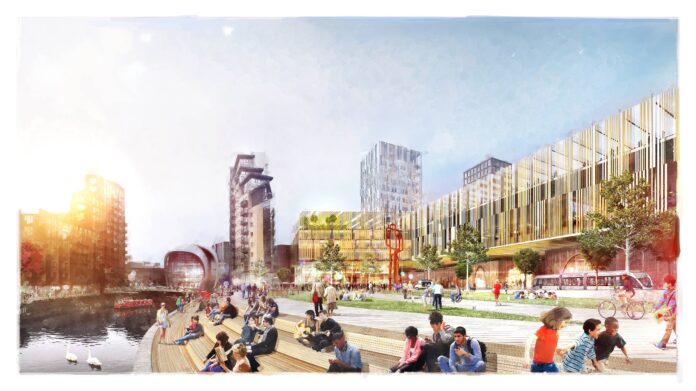Words: Richard Beecham
Leeds is now the largest city in Western Europe without a built-in mass transit system, such as a tram or underground rail.
That could change, with initial proposals for nine new mass transit routes – including one through West Leeds, with stops in Wortley, Bramley and Pudsey – announced earlier today. Work could possibly start within five years.
But why has Leeds struggled so badly to build one?
Electric trams in the city date back to the early 1900s, before services were abandoned in the 1950s due mainly to the rise in suburban living and the personal car.
But since then, numerous attempts have been made to get the people of Leeds back on public transport.
The city proposed a “bus rapid transit” network in the late 1960s, which would have acted as a network of express buses, as well as early form of “park and ride” scheme in Kirkstall Road.
The services would have connected Leeds City Centre with Bradford, Wakefield, Pudsey, Alwoodley, as well as parts of east and south Leeds.
Unfortunately, it wasn’t enough to coax commuters from their cars. And services would ultimately be cancelled.
Inspired by London’s Docklands Light Railway scheme, which opened that year, the council came up with plans for the east Leeds light railway service dubbed the “metro line” in 1987.
The plans included connecting Leeds Town Hall, the Headrow and Quarry Hill with areas of east Leeds, such as Killingbeck, Halton, Colton and Seacroft.
But the scheme met with strong objection from some living in new houses in Colton – who said the line would travel too close to their houses. The scheme was dropped during public consultation.
A larger mass transit idea emerged in the 1990s – known as Supertram. This would see three lines – Headingley, East Leeds and South Leeds, with four terminals – Bodington, Grimes Dyke, Stourton and Tingley.
Funding for the scheme was approved by Government in 2001, but increasing costs saw the scheme shelved three years later, and finally scrapped by central Government in 2005.
In 2012, government ministers gave the green light to a £250m electric trolleybus scheme.
It was hoped that, by 2018, electric buses powered by overhead wires would be running across the city on a north/south route every six minutes during peak times.
But this was scrapped four years later when transport minister Lord Ahmad accepted a planning inspector’s recommendation the scheme should not go ahead.
More than £70m had been spent on the trolleybus scheme and its predecessor Supertram.


It is frankly ridiculously hopeless to get this or any council of Leeds since the scrapping of the trolly buses to be strong enough to get this sorted. West Yorkshire Combined Authority have the support of all five councils to get this funding in place and get the job done. We need this transportation in West Yorkshire because we deserve it as one of the most productive areas in Europe!